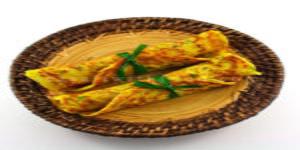
Scope
The Hindu Compliance System gives direction on cooking science which is compiled from Bhaga Shastra. Bhaga Shastra classifies foods into rajasik, tamasik and satvik types. Rajasik food makes one feel agitated, aggressive, lustful and egoistic. Tamasik food makes a person lazy, sleepy and depressed. Satvik food gives clarity to the person and brings him peace of mind leading to bhakti (devotion), tripti (fulfilment) and ananda (bliss).
Six types of tastes are described in the Bhaga Shastra – salt, sweet, sour, hot, bitter and pungent. It states that every meal should include all these tastes so that the appetite is satisfied and the tongue is neutralized by all the tastes being together. As per the instructions in Bhaga Shastra, in order for all parts of the body, mind and brain to function properly, a balanced diet of all these tastes is a must.
Further, the purpose of having all six tastes is to balance the tridoshas in the body, namely vaata (acidic), pitta (alkaline) and Kapha (phlegm). Every ingredient used in Hindu cooking is classified as per its dosha properties.
For thousands of years, Hindus have been cooking food that is organic, nature friendly and with numerous benefits. This standard will help organizations, businesses like hotels, restaurants etc. to cook the food as mentioned in Hindu Scriptures.
Ingredient and Process of Cooking
Unlike in the roti of the North, the ingredients for adai/rotti are washed thoroughly, dried in the sun and then coarsely ground into flour. The dough is prepared by boiling pure water and pouring it over the measured out flour followed by the seasoning that is also poured over it.
Primary ingredients are rice and a variety of lentils (dal) such as chana dal/Bengal gram dal, toor dal/pigeon pea, moong/mung beans, etc. Other essential ingredients are asafetida, cumin seeds/jeera, ginger to enable digestion. And, for seasoning red chilies/oil, ghee, mustard, grated coconut, black gram dal, etc. are typically used.
Ingredients:
Rice – ¼ padi
Chana Dal/Bengal Gram – veesam 1/16 padi
Toor Dal/Pigeon Pea – veesam 1/16 padi
Moong Dal – veesam 1/16 padi
Pure Water – 3 veesam 3/16 padi
Grated Coconut – 3 palam
Cumin Seeds – ¼ r.e
Asafoetida – 4 ku.e
Powdered Salt – ½ r.e
Ghee – 1¼ palam
Mustard – ¼ r.e
Urad Dal/Black Gram – ¼ palam
Red Chillies – ¼ r.e
Ghee – 1 and ¼ palam
Method:
1. Wash rice, chana dal, moong dal, toor dal and drain the water. Dry these items well and coarsely grind it to flour. Pour pure water in a pan and boil it. Add grated coconut, cumin seeds, asafoetida, powder salt, one by one into the pan. Also add the ground flour, stir and
transfer it into a tray.Refer to recipe no. 22 for seasoning and add ghee, mustard, urad dal, red chillies. Put this seasoning into the flour, knead the dough and make lemon-sized balls out of it.
2. Heat ghee. Remove from the fire and turn the pan in a clockwise and anticlockwise direction to smear the ghee all over the pan. Take ½ inch gooseberry size balls(dough) pat it round and make a hole in the middle and stick it to the inside of the pan. Keep this pan in the slow flame. Take another vessel filled with water and close this pan. When the water is boiled, check if the pancakes if they are cooked and golden brown.
References
Hindu Bhaga Sasthiram: Click Here
Hindu Compliance Body
The Hindu compliance body was established under the executive order of The Supreme Pontiff of Hinduism, dated August 14, 2020, order number 10010, under the title Reviving the Hindu Compliance System and Body
to create, promote, spread and teach the standard procedures for all products and services that are in compliance Hindu Shastras.
Copyright
HCS has the copyright of all its publications. No part of these publications may be reproduced in any form without the prior permission in writing to HCS. This does not preclude the free use, in the course of implementing standard, of necessary details mentioned above. Enquiries related to copyrights to be addressed to KAILASA.
